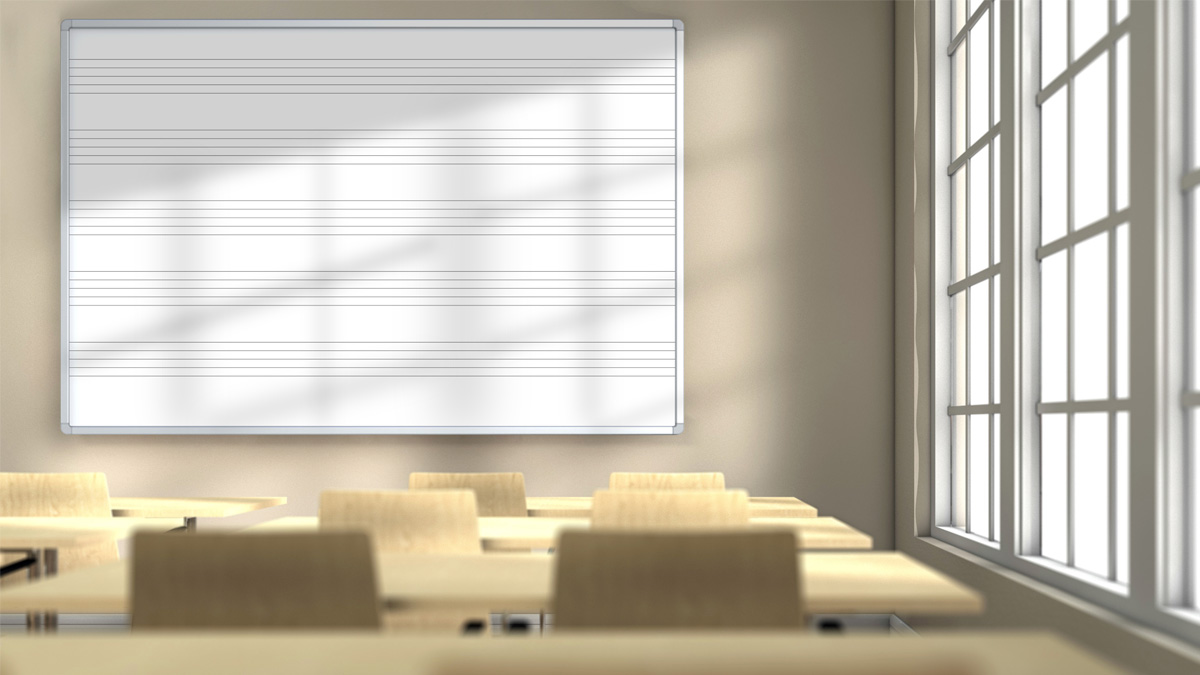When designing new classrooms the most important factors to consider are designs that encourage movement, provide space for collaborative and independent work, seamlessly embed technology, promote creativity, and provide flexibility.
- Design for Movement: Sitting is the new smoking!
With the childhood obesity rate continuing to climb, encouraging students to move while in the classroom is essential. But this isn’t the only reason to design classrooms for movement: creating ways for students to move around leads to improvements in concentration, focus, engagement, and learning.
A recent study with high school students found that the introduction of standing desks resulted in improved executive function, memorization, and writing skills. Even small amount of movement, the study found, resulted in improved learning. Gone are the days of students glued to their seats in rows of desks. Classrooms need to be designed to encourage natural movement to nudge students to move more frequently.
How do we do this?
There are many ways to encourage movement in the classroom.
- Using adjustable standing desks promotes movement, as does the selection of chairs that allow students to easily shift positions. Softer seating such as beanbags and exercise balls can be spread throughout the classroom and can be especially useful for restless students.
- Incorporate movement into the curriculum by using “brain breaks” for older students such as tossing a ball around the room or becoming a human wave similar to what happens at a sporting event. For younger students use activities that pair with learning goals, such as standing up and learning a song and dance that teaches students how to count or subtract.
- Have students engage in human labs. One teacher asks her students to demonstrate the differences between liquids, gases, and solids by having her students act out these phenomena.
- Ask students to do math or practice spelling while jumping on a mini trampoline or shooting crumpled paper through a hoop. Use flexible furniture in the classroom that students can easily and quickly reconfigure depending on what they are studying, or to simply give them a five-minute exercise break.
- Furniture that includes wheels should also include wheel locks or some easy way to stabilize the chair or table. There are times in a classroom that promotes movement when the teacher needs to restrict that movement!

- Build for Collaboration and Independent Work
Collaborative work stations and tables have been the buzz word in classroom design for several decades now as we recognize the need for students to learn to work together with others. But don’t forget that leaning also involves allowing students time to individually reflect and build knowledge in a deeply personal way. While the pendulum has swung perhaps too far toward designing collaborative spaces, we are now seeing a shift in design that includes spaces for individual learning.
How do we do this?
There are many ways to design for combined collaborative spaces and individual study opportunities.
- Choose between having dedicated permanent spaces versus using flexible furniture to create these learning zones when needed. Dedicated space for these activities can help promote these behaviors, however most educators value being able to easily rearrange spaces based on need.
- Collaborative zones for group projects, whether reconfigurable or not, can include large whiteboards and tables with space between each group seating area and possibly noise reducing dividers. Remember to allow space for technology connectivity.
- There are many new furniture options for quiet study nooks or pods for individual study. New furniture is now made with sound absorbing features to support quiet study.

- Embed Technology Seamlessly: Clean up your Cables!
With all the new computer devices in classrooms there are often messy and even dangerous computer chords strung across classrooms. If your school is still relying on old patched together quick fixes such as clips and duct tape, consider cleaning up your act.
How do we do this?
There are many new products available to help minimize the problem of computer cables and chords spread throughout the classroom.
- If you are using a mobile A/V cart for many of your devices, invest in a cable management system that will help keep all the power cords and cables neatly within the frame of the cart. MagDaddy™ can be mounted to the cart and cables can be placed in the clips, Animal clipsare another option that works well in school carts, or use PowerGistics Towers that prevent students from letting out too much cord.
- Run a surface raceway through the classroom to hide exposed cables and keep everyone safe.
- Use cord covers, or at minimum use Cable Path tape, to keep cords from being tripping hazards.
- Promote Creativity: Mix it Up!
Educators recognize that a big piece of leaning involves providing students with open-ended spaces and tools to encourage innovative thinking and imaginative problem solving. Classrooms need to be designed for innovative teaching and learning.
How do we do this?
- Surround students with more writable space such as personal whiteboards, tablets, digital whiteboards, or simply scratch paper and colored pens nearby.
- Provide interesting objects and devices such as art supplies, building kits, microscopes, and other tools for students to experiment with as they learn and problem solve. Change out objects frequently to spark curiosity.
- Change classroom themes every month to provide inspiring ideas, images, and quotes and set up inspiration zones with baskets of books that augment the curriculum.
- Use interactive bulletin boards to engage students by providing hands-on wordle, code cracking, progress tracking, and other activities.
- Consider adding an AI tinkery for older students or a space for teachers to explore and unpack new AI tools. Similar to makerspaces, AI tinkeries provide space for figuring out creative and safe ways to use AI in the classroom. The Stanford AI Tinkery provides a collaborative dedicated space for exploring ways to use generative AI in the classroom.
- Flexibility with Limits
There has been so much written in the last few years about flexible chairs, flexible furniture, flexible storage, and flexible room dividers, but what is really needed is to provide teachers and students with the ability to make decisions about how, where, when, and what type of learning is best suited for a particular learning activity.
How do we do this?
- Having furniture with wheels is great, but be sure that any chairs, tables, desks, or carts that have wheels also have wheel locks.
- Less is more: do not pack the classroom with too many desks, alternative seating options, mobile carts, and large collaborative work tables. Classrooms need to be designed so that teachers can easily move around the room and so that there can be space between students for health and comfort.
- Remember that learning can be moving. Involve students of all ages in rearranging flexible furniture that adapts to their needs and use these new arrangements as teachable moments. Teachers can review with students whether the student-led designs are working or need to be adjusted.
Leslie Stebbins is the director of Research4Ed. She has more than twenty-five years of experience in higher education and K-12 learning and instructional design. She has an M.Ed. from the Technology Innovation & Education Program at the Harvard Graduate School of Education and a Master’s in Library and Information Science from Simmons College.








